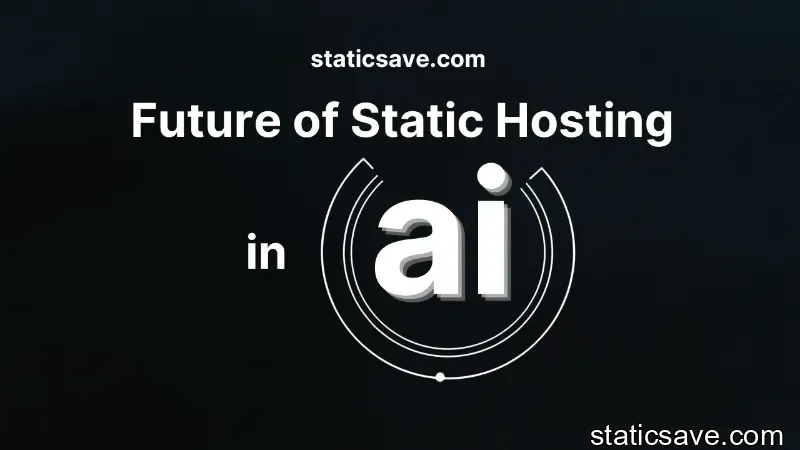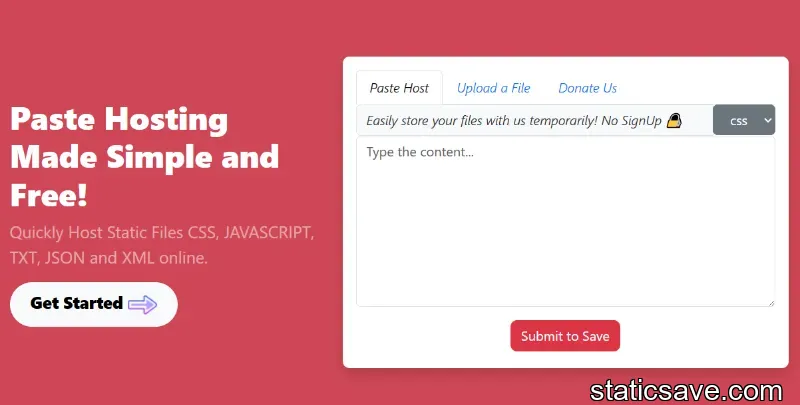The Future of Hosting Static Files in the Age of AI

As the internet continues to evolve and become more data-driven, the concept of hosting static files may seem outdated. However, emerging trends such as serverless computing, edge computing, and content delivery networks (CDNs) are keeping static file hosting relevant and even transforming the way we host and deliver them. In this article, we will explore how these trends are reshaping the future of hosting static files and discuss their potential benefits and challenges.
Despite the rise of dynamic and data-driven websites, the importance of static file hosting remains relevant in the era of artificial intelligence (AI). This article will delve into how serverless computing, edge computing, and content delivery networks (CDNs) are changing the landscape of static file hosting and what this means for the future of the internet.
The Need for Static Files
Static files, which include HTML, CSS, JavaScript, images, and videos, are the foundation of the internet. Although dynamic web applications and AI-powered content are gaining popularity, static files remain essential for various reasons:
- Speed and Efficiency: Static files contribute to faster loading times and more efficient website performance. Since static files do not require server-side processing, they reduce latency and ease server workload, resulting in a better user experience.
- Security: Static files are less vulnerable to security threats as they lack server-side code execution. This makes them a safer option for hosting sensitive information.
- Offline Accessibility: Static files can be cached, allowing users to access web content even when offline. This feature enhances user experience and ensures that the website is accessible at all times.
- Scalability: Static files can be efficiently distributed globally through Content Delivery Networks (CDNs) for fast and reliable content delivery. This makes them a scalable option for websites with a global audience.
In summary, static files are a critical component of web hosting, and their importance cannot be overstated.
Read: Simple JSON Hosting service: A Better Way to Host Your JSON Files Online
Now, let's explore the exciting developments that are shaping the future of hosting static files:
1. Serverless Computing
Serverless computing is revolutionizing how we approach hosting static files. In a serverless architecture, you don't need to manage traditional servers; instead, you can rely on cloud platforms to execute code and host your files on-demand.
Benefits:
- Cost-Efficiency: Serverless computing allows you to pay only for the resources you consume, making it a cost-effective solution.
- Auto-Scaling: Resources scale automatically based on demand, ensuring smooth and efficient content delivery.
- Simplified Management: No server maintenance is required, reducing the administrative burden.
Challenges:
- Vendor Lock-In: Serverless platforms are often proprietary, which may result in vendor lock-in and limited flexibility.
- Cold Start Delays: Some serverless functions may experience initial latency, known as "cold start" delays.
2. Edge Computing
Edge computing brings computation closer to the end-users by processing data at the network's edge rather than in centralized data centers. This approach is perfect for hosting static files as it minimizes latency and enhances user experience.
Benefits:
- Low Latency: Files are served from edge servers located near users, reducing latency and improving load times.
- Redundancy: Edge servers offer redundancy, ensuring content availability even in the event of server failures.
- Improved Privacy: Sensitive data can be processed locally, enhancing privacy and security.
Challenges:
- Infrastructure Management: Maintaining a network of edge servers can be complex and costly.
- Data Transfer Costs: Data transfer between edge servers and the origin server may result in additional expenses.
Also Read: How to Use Custom CSS and JavaScript on Your HTML Webpage?
3. Content Delivery Networks (CDNs)
CDNs have been a cornerstone of static file hosting for years, and they continue to evolve to meet the demands of AI-driven applications.
Benefits:
- Global Reach: CDNs have an extensive network of servers worldwide, ensuring fast and reliable content delivery to users across the globe.
- Enhanced Security: CDNs offer security features, including DDoS protection and web application firewalls.
- Dynamic Caching: CDNs can intelligently cache and serve both static and dynamic content.
Challenges:
- Costs: Premium CDNs can be expensive, and the cost can increase with the volume of data transferred.
- Complexity: Setting up and configuring CDNs may require technical expertise.
The Synergy of These Trends
The future of hosting static files isn't limited to choosing one of these trends; it's about finding the right combination to achieve optimal performance and cost-effectiveness. For instance, serverless computing can be utilized for executing dynamic functionalities while relying on CDNs and edge computing for seamless static file delivery.
By harnessing AI-driven insights and analytics, you can fine-tune your static file hosting strategy. AI can help optimize content caching, distribution, and personalization to ensure that users receive the right content at the right time.
StaticSave.com: Paving the Way
StaticSave.com, a platform for hosting static files, has recognized the changing landscape of static file hosting and is adapting to meet the evolving needs of users. With a simple and intuitive interface, StaticSave.com allows you to easily host your static web content for free.
How to Save Static Assets on StaticSave.com:
- Sign In: Create an account on StaticSave to get started.
- Create a Folder: Organize your static files by creating a folder for each path or project.
- Add New Pages: Within each module, add new pages with page names and types to structure your content.
- Edit and Submit: Update your content using the provided text editor and submit to save your static content online.
- Add More Files: You can include CSS, JavaScript, TXT, JSON, XML, and more in a similar manner.
With a generous character limit of 30,000 characters for each static content, StaticSave.com offers ample room for your web assets. You can easily share the hosted content via the provided URL, making it a hassle-free solution for individuals and businesses looking for fast and efficient static web hosting.
Also Read: Need for Frequent Updation of CSS and Javascript in Web Application
Embracing the Future
In the age of AI, the hosting of static files is not only relevant but evolving to meet the demands of modern web applications and user expectations. With serverless computing, edge computing, and the power of CDNs, static file hosting is becoming more efficient, reliable, and accessible.
StaticSave, with its user-friendly platform, is at the forefront of these changes, offering a simple and cost-effective solution for those seeking to host their static web content. As technology continues to advance, it's essential to stay updated and adapt to the latest trends in hosting static files to provide the best experience for your users and take full advantage of the opportunities that AI and modern hosting solutions offer.




